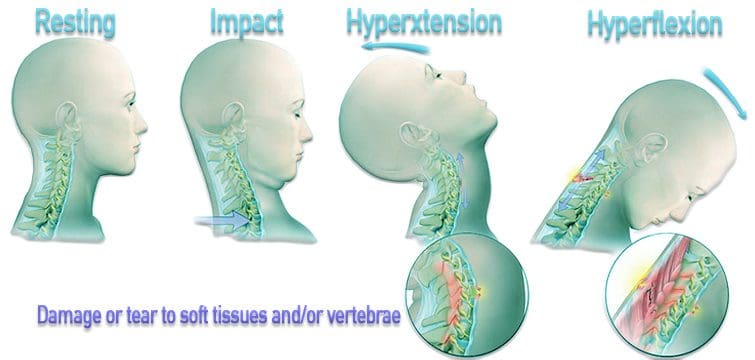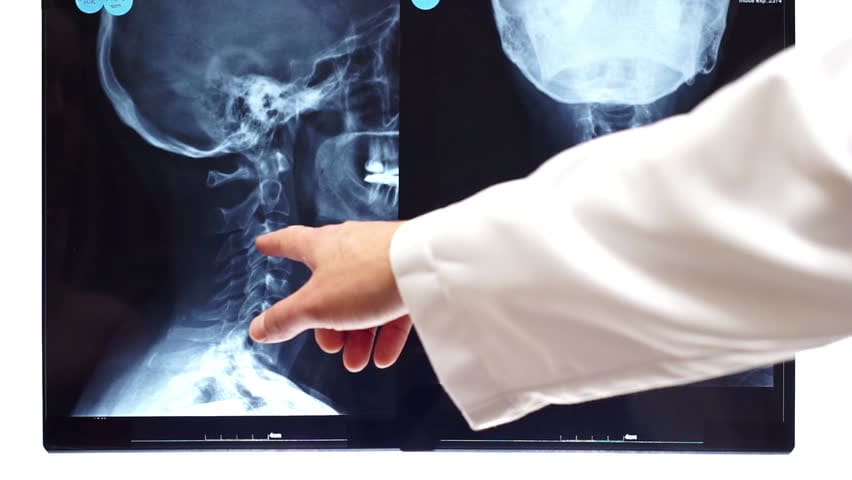Physical therapy involves both passive and active treatments and is an effective treatment for whiplash, especially combined with other treatments, like bracing and chiropractic. Whiplash causes the soft tissues in your neck to get damaged. A physical therapist can work with you to restore proper function and movement of those tissues.
Passive treatments help to relax tension in the muscle tissues brought on during the accident in the neck and body. It is considered a passive treatment because the patient does not actively participate. Fresh from the injury acute pain sets in, therefore passive treatment is usually the first type of therapy used as your body begins to heal and adjusts to the symptoms.
The primary goal of physical therapy is to get the patient actively participating in active treatment until they can do the exercises on their own. The therapeutic exercises that physical therapists teach to a patient are for strengthening your entire body to ensure that your spine is optimally supported.
Passive Treatment
Deep Tissue Massage
This technique focuses on tight muscle tension that develops from the injury. Direct pressure is applied and massaged to release the tension in the soft tissues like the:- Ligaments
- Tendons
- Muscles
Hot/Cold Therapy
Heat therapy is used by physical therapists to circulate more blood to the injured area. Increased blood flow allows more oxygen, and nutrients to the area. Blood also removes the waste products created by muscle spasms.Cold therapy slows the blood's circulation, which helps to reduce inflammation, muscle spasms, and pain. Physical therapists alternate between hot and cold therapy depending on the patient's condition.
Whether in a car accident or other type of trauma hot and cold therapy can be used at home. Ice should be used first to bring down the inflammation. After 24 to 48 hours, switch between ice and heat. The heat helps relax tense muscles and increases blood circulation to the injured area. Never put ice or heat directly on the skin, wrap in a towel then apply.
Ultrasound
Ultrasound helps reduce muscle:- Cramping
- Pain
- Spasms
- Stiffness
- Swelling
Active Treatment
When the active part of the therapy begins, the therapist will teach/train you a variety of exercises to work on strength and range of motion or how the joints move with ease or not. Each physical therapy program is customized to each patient's condition, health, and medical history.Some exercises might not be appropriate for someone else with a whiplash injury as they could worsen their symptoms and exacerbate the injury. Learning how to correct your posture and utilizing ergonomics into your regular daily activities is part of the therapy program. Once recovered this posture work will continue to help because of the training/exercising you can prevent other forms of neck pain that develop from regular life.
Physical therapy for whiplash patients helps reduce muscle spasms, increase blood circulation, and promote healing of the neck tissues.
Spinal Bracing Another Treatment Option
Whiplash is very treatable, another option is using a cervical brace or cervical collar. The brace provides support to the neck while the soft tissues heal. The soft tissue's job is to support your neck, but when they're injured, they can't do their job. That's where the brace comes in.Cervical devices limit the neck's movement and support your head, which takes the weight off the neck.
This allows the muscles to rest while they heal. Your doctor will inform you of how long you need to wear the brace. Generally, it is worn for two to three weeks. The doctor will explain how to wear the collar, which means how long to weary it each day, caring for the collar, handling daily activities like showering, sitting, sleeping, etc. Symptoms usually subside in two to three weeks. However, if there is still pain, soreness, or other symptoms, you may have to try other treatments.








